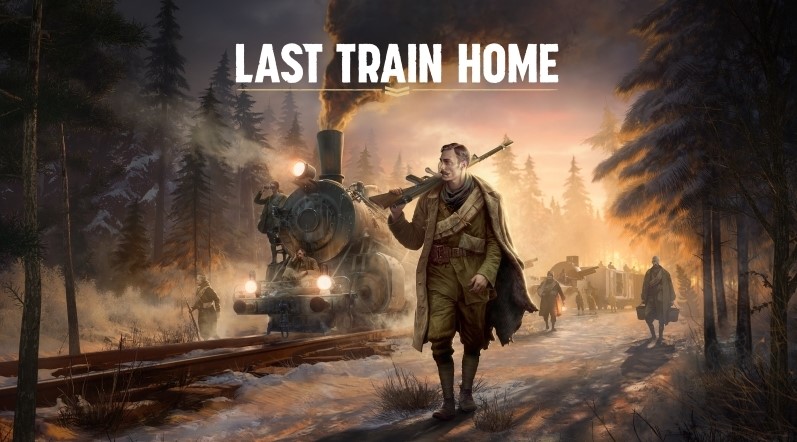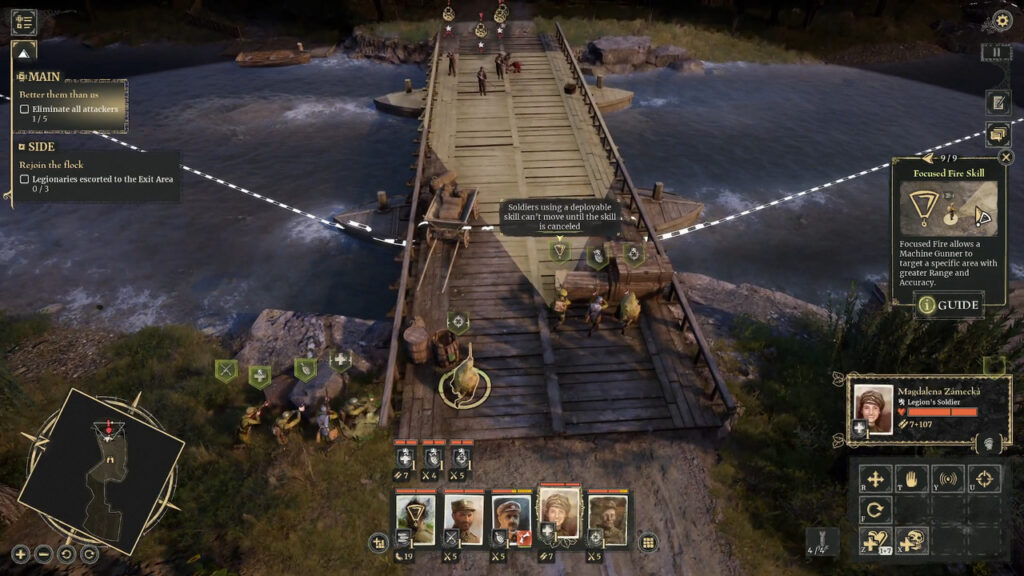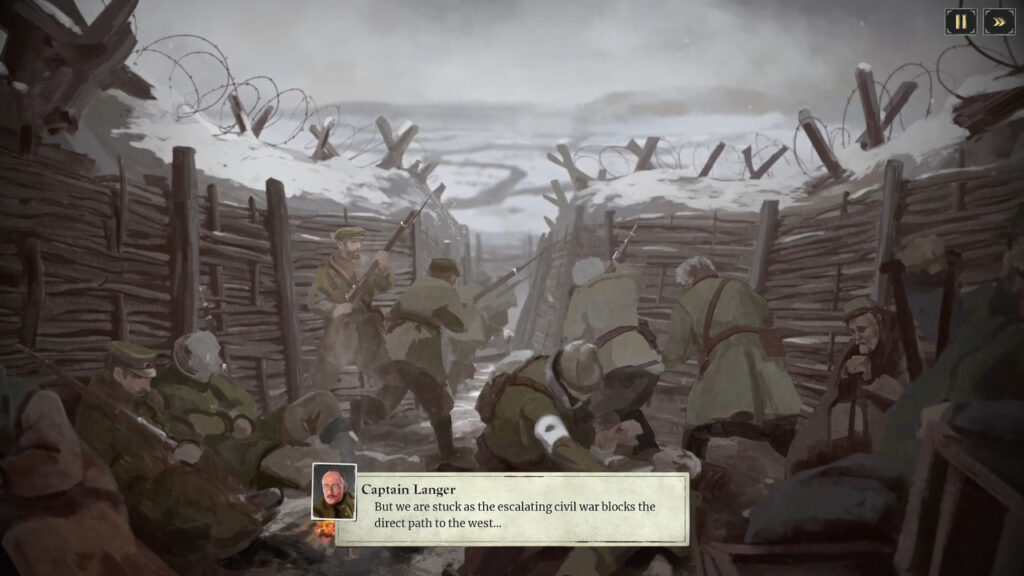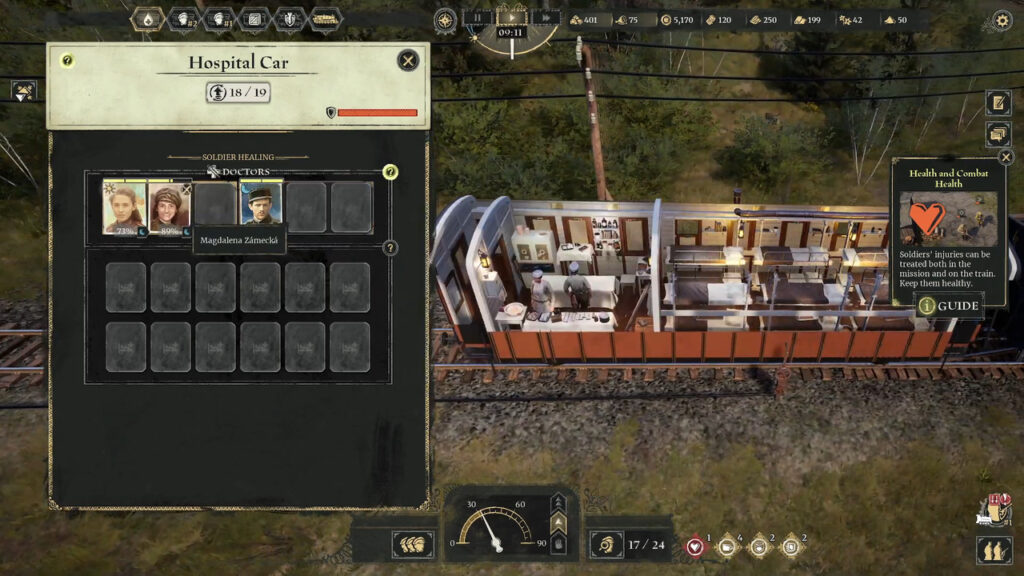
Developer: Ashborne Games
Publisher: THQ Nordic
Platform: PC
Tested on: PC
Last Train Home – Review
There is a seemingly endless slew of video games set during the First World War, but the vast majority of these focus on aerial dogfights and trench battles fought between the Allied Powers and the Central Powers. Once the conflict was declared over on the 11th of November 1918, the fighting didn’t stop at once, as news of the armistice had yet to reach every corner of the world. Many smaller civil conflicts were still ongoing. It’s in this final period of WW1 that Ashborne games’ RTS game Last Train Home is set, as it focuses on a group of soldiers trying to make their way home through Russia once news reaches them that the war is over. It’s not the most well-known tale from this period of human history, at least not in Western Europe, though it’s definitely worth telling. But how well does it translate into a video game? Read on to find out.
Story
Based on historic events, Last Train Home tells the story of the Czechoslovak Legion and the hardships they faced at the tail end of WW1. When we meet the legionnaires, they are stranded in Russia, caught in a civil war. Players take on the role of the newly appointed leader of the Czechoslovak Legion and are tasked with safely bringing back their comrades to Vladivostok. To do this, the legion commandeers the last working locomotive in Siberia, and travels through the harsh, war-torn region. Given that the development team has Czechian roots, Last Train Home’s story is personal to them: this is the story of their proverbial grandfathers, and every single soldier has a name and a backstory. Even to outsiders, the sheer amount of respect with which Last Train Home unfolds is clear. This is not an over-the-top glorification of war but instead a harsh tale of regular men facing real atrocities. By scaling down the conflict to the story of this small legion, the stakes become unnervingly high.
Graphics
Although Last Train Home is a visually impressive title, rendering the graphics does eat up a lot of resources. We noticed a significant drop in frame rate at higher settings, and had to dial things down significantly to be able to play the game without slowdown or stutter. Depending on your hardware, your mileage may vary here, but if you’re running the game on an older computer, this is something you should be wary of. That said, even at lower settings, Last Train Home looks great. Of note is that the game seamlessly blends hand-drawn art with historical footage in its cutscenes. This lends an even greater air of authenticity to the game.
Sound
It’s not often that a game aimed at the Western market is primarily voiced in anything other than English. Last Train Home is a welcome exception to this, with the characters talking Czechian. This increases the feeling of immersion, and thanks to the magic of subtitles we were still able to follow what was going on. When it comes to music, Last Train Home doesn’t go for a bombastic orchestral approach, but instead a more subtle soundtrack plays, underlining the tense atmosphere. The sound effects amplify this further, with gunshots and explosions having audible heft to them.
Gameplay
While we wouldn’t go as far as to say that Last Train Home pushes the limits of its genre, what the game offers is an incredibly solid take on classic real-time strategy gameplay, with a twist concerning the titular train. Throughout its main narrative campaign, we grew close to the soldiers that made up the legion, as they all added something valuable in terms of gameplay, but also because the game featured a permadeath mechanic, and every death counted, both in the story and because it hamstrung us. Last Train Home is a suitably difficult game, which doesn’t just center around brutal combat, but resource management as well. As you can imagine, the wastelands of Siberia aren’t exactly rich in materials, and we often found that the harsh environment was more difficult to deal with than anything enemy forces would throw at us, not in the least because of the psychological effects the entire ordeal had on our soldiers.
The train acts as a moveable base that needs to be managed throughout the journey. Naturally, this requires resources, both to keep the train running and to keep the soldiers motivated and healthy. As such, regular stops at points of interest are required. Here, you’ll need to deploy squads of units to scavenge materials from the environment. Fortunately, not every stop puts you in hostile territory. Sometimes, you’ll even run into a bar, where troops can take a well-earned rest, have a few drinks, and restore their morale in the process. Morale is one of the three stats that you’ll need to keep an eye on for each of your units, next to health and stamina. Last Train Home requires careful juggling of these stats. The reality is that you won’t be able to keep all three topped up constantly, and you’ll need to make careful choices to keep your soldiers under control. Should morale drop too low, for example, you might face desertion, resulting in a game over. Likewise, low health and stamina mean that your troops won’t be as effective when venturing outside to gather resources or on the battlefield.
Speaking of the battlefield, this is where Last Train Home feels more like a classic RTS title. You’ll need to order your units around relatively small maps, and complete objective-based missions, ranging from defending villages to eliminating specific targets. Each of your soldiers brings their unique abilities to the table, from a stealth specialist to a field medic. Resource management is equally important here, with ammo and medical supplies limited and permadeath rearing its ugly head. Should things go awry, perhaps because of a surprise attack from the enemy, you can reload a previous save, although even this can be a tough decision: is it worth restarting a mission to save a unit, or is the silver lining that a soldier dying results in one less mouth to feed, meaning ration management becomes slightly easier? It’s just one of many engrossing choices you’ll have to make throughout the 25-ish hour-long campaign. If you’re still on the fence, we do recommend giving the demo a try, as this allows you to play a hefty 5-hour-ish chunk of said campaign. Chances are you’ll go right back for more, however, as you’ll inevitably grow close to your fellow legionnaires.
Conclusion
It’s clear that Ashborne Games wanted to paint a realistic portrait of what the Czechoslovak Legion had to endure. While this means that Last Train Home doesn’t necessarily bring the same spectacle to the table that titles that focus on the wider conflict of WW1 do, there is something to be said about this smaller-scale and more intimate approach. Last Train Home’s RTS gameplay doesn’t bring anything new to the table, but what it does deliver is so good that we’d still outright recommend the game to anyone who has either an interest in the overlooked history of the Czechoslovak Legion or those who simply enjoy RTS titles in general.
1 Comment
Leave a Reply
You must be logged in to post a comment.









[…] Last Train Home, a tale about war and survival in Czechoslovakia, has just seen the arrival of its first DLC expansion. In Legion Tales players will be able to immerse themselves in 10 legendary missions, recounting combat encounters that are legendary among legionnaires. Each of these missions explores a unique story, with its own characters and events worth retelling. From a fierce naval battle to a machine-gun priest mowing down evil in the name of the Lord. To celebrate this release, early adopters can also enjoy a 10% discount up until February 8th. If you don’t own Last Train Home, you can pick up both the standard edition of Last Train Home, as well as the Deluxe edition which includes the DLC, with a 34% discount on Steam, also until February 8th. […]